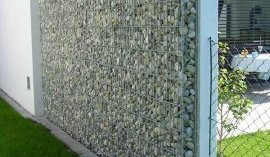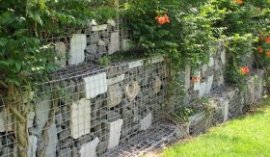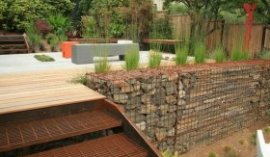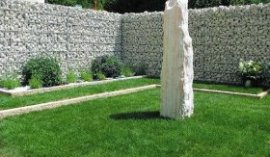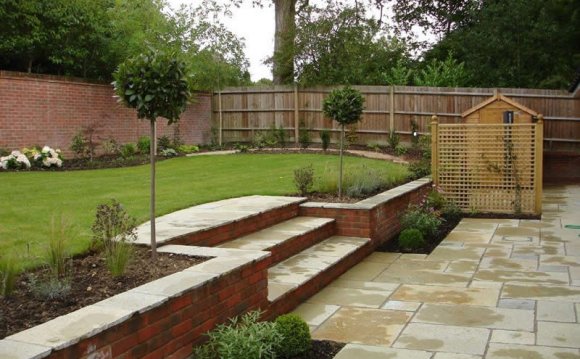
 What is a gabion and how to use it in the landscape design? The term “gabion” comes from a Latin word which means “woven basket”.
What is a gabion and how to use it in the landscape design? The term “gabion” comes from a Latin word which means “woven basket”.
Gabions are modules with a rectangular shape and various sizes. Filled with river or quarry stones the baskets are aligned with a grid network. For greater stability of the structures barriers are placed that prevent excessive stretching and deformation of the gabion wall.

Using gabion walls is efficient, modern and environmentally friendly solution to prevent erosion, and their mainly used for stabilization and strengthening of embankments, slopes, landslides, rivers, coastlines, roads, highway, etc. Gabions are made of special double twisted hexagonal network with thick zinc coating. Gabion walls are very durable and resistant to earth pressure, easy to install, require almost no maintenance and are self-draining, making them an ideal solution for retaining walls.
A gabion wall has many advantages – it offers a reliable protection against noise, privacy, it can be used as a windshield; it has an attractive design. The low cost, durability and functionality are the main advantages of gabion walls. A gabion wall can be built as a DIY project for retaining walls in the garden and is a good project for people who are not very skilled at concrete pouting or people who do not feel skillful enough to use bricks or blocks for building a retaining wall. Furthermore, the materials are easy to transport which means less time for labor to build the gabion walls, thus less money spent.
The gabions are metal cages filled with stones, often used as separate wall, fence. Durability is a very important advantage of gabion walls. They are not easily dragged down a sloping or eroding terrain.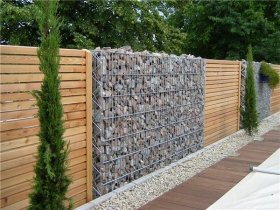 The strong base and the flexibility of the wire baskets allow small movements as the ground below is shifting. The environmental friendliness and the ability to combine with other materials are another advantage. Gabions can be combined with wood, metal, concrete or any other fencing material or garden wall material.
The strong base and the flexibility of the wire baskets allow small movements as the ground below is shifting. The environmental friendliness and the ability to combine with other materials are another advantage. Gabions can be combined with wood, metal, concrete or any other fencing material or garden wall material.
Gabions have an excellent drainage capacity. The gaps between the rocks can be filled with vegetation and silt, which will reinforce the gabion wall. In addition, the gaps between the rocks allow water to flow through the structure, which helps to maintain the ground water level relatively low.
